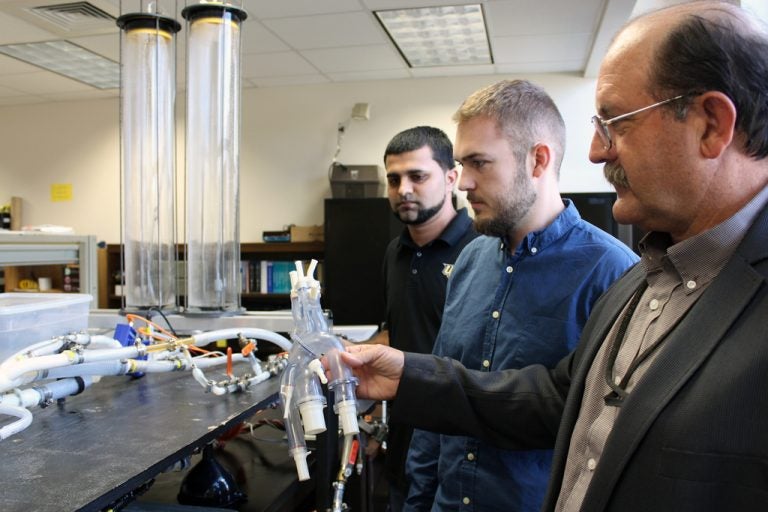Looking to give students another opportunity to land jobs of the future, the University of Central Florida’s Board of Trustees on Thursday approved a new master’s degree in biomedical engineering.
Biomedical engineers, with an average salary of $77,000 a year, are in demand and are projected to continue to be in demand, according to the U.S. Bureau of Labor Statistics.
The new biomedical engineering program links education and research efforts from the College of Engineering & Computer Science and the College of Medicine. It will be housed in the Mechanical and Aerospace Engineering Department and focus on using engineering in medicine, such as developing better systems to deliver drugs, train medical professionals and repair damaged organs.
Those who pursue this field are looking to find ways to help doctors with surgical and cancer treatment planning, engineering-based simulation in cardiovascular disease and treatment, development of devices for improved and novel diagnosis, image-guided surgery and surgical robotics, and development of assistive and rehabilitative technology.
The idea of the biomedical engineering master’s program came after the two colleges held an event in 2013 at which 60 faculty members spent a day learning about each other’s specialties and how they could work collaboratively to solve the nation’s healthcare problems. In addition to creating the master’s program, the two colleges have already hired joint faculty, set up new labs and mentorship programs at the medical school, and are working on collaborative research efforts.
Sampath Parthasarathy, associate dean of research for the medical school and a cardiovascular scientist, said heart research is a natural area for such collaboration. Engineers can help medical researchers understand systems such as how blood flows in the heart and better engineered treatments for heart blockages.
“What we see as a wall, engineers see as gates,” Parthasarathy said. “And they can show us how to open those gates.”
The Bureau of Labor Statistics reports that national employment of biomedical engineers is projected to grow 27 percent from 2012 to 2022, much faster than the average for all occupations. And given Florida’s aging population, there may be even more opportunities for students with advanced degrees in the state. Florida is one of the top eight states with the highest biomedical engineer employment, with an estimated 800 employees.
“The new degree strengthens UCF’s role as a leading metropolitan partnership university engaged in pivotal disciplines with wide-ranging applications and major societal impact,” said Michael Georgiopoulos, dean of the College of Engineering & Computer Science. “We expect our master’s degree in biomedical engineering will attract top-performing student researchers who seek to build their careers in a burgeoning field as they work alongside renowned faculty in multiple UCF colleges and units.”
Other collaborators on the program include the College of Nursing, College of Optics & Photonics, and College of Sciences. The program provides an opportunity for these researchers and others to more closely collaborate on biomedical engineering research and education. These multi-disciplinary collaborations will advance the aspirational research and educational goals of the university.
UCF engineering professor Alain Kassab will lead the new program that will launch this fall. The program adds to the university’s growing focus on biomedical solutions. The university is already recruiting faculty for a Prosthetic Interfaces Cluster, which will be a focal point for world-class research and educational endeavors for UCF scholars working on technology pertinent to medical applications, devices and systems.
The new degree program will consist of 30 credit hours at the graduate level in one of three tracks: biofluids, biomechanics, or the biomedical engineering track for the M.D. program. Students in the biofluids and biomechanical tracks should be able to complete the program in two years. The M.D. track would take five years to complete.
An estimated 15 students are expected to enroll the first year, with 34 students per class expected by the fifth year.
